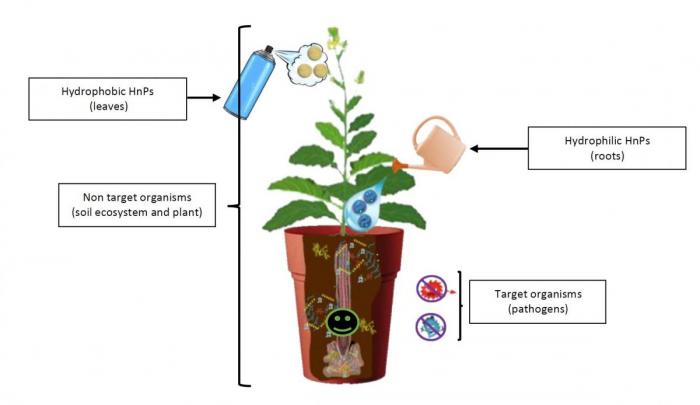Barbara Plancot
PRA 1, 2, 3, 4
EcofrieNdly Hybrid Nanos pestiCidEs (ENHaNCE)
Plants are constantly exposed to pathogen aggressions, which lead to severe disease development and massive agricultural losses. To fight these diseases, pesticides are used in large quantities and often without adequate technical guidance, leading to negative consequences for the environment and the health of farmers and consumers. In France, the Ecophyto governmental plan aims to reduce by 50% the use of pesticides by 2025. Chemical pesticides are no longer available over the counter to home gardeners since January 2019. It is therefore important to develop ecofriendly alternatives, not only for the protection of field crops, but also for off-ground culture, transplanting cuttings and private gardeners.
We will design new hybrid nanopesticides (HnPs) from biosourced polymers (nanochitin and nanocellulose), their soluble derivatives (chitosan, carboxymethylcellulose) or soluble biopolymers (alginate), on which inorganic nanoparticles with antibacterial properties (e.g., Ag and Cu) will be grafted. Most of these compounds are acceptable in organic agriculture in France. In addition, some of the biopolymers considered as vectors, are themselves endowed with antimicrobial properties, or able to induce plant response defense against pathogens, which will allow us to combine different antimicrobial activities within the HnPs.
Based on a safer-by-design approach, our objective is to determine what are the physico-chemical properties of the vectors allowing a controlled release in the zone of interest (plant roots and leaves) in order to target pathogenic organisms and reduce the impact on non-target organisms (soil ecosystem and plant). Hydrophobic (Pickering’s emulsions) and hydrophilic formulations of metallic nanoparticles encapsulated or grafted on biopolymers will be designed to target respectively the leaves and the roots. These different formulations will allow to focus specifically a zone of interest and to use less amount of pesticide. As example, silver concentrations required for antimicrobial properties can be lower at the nanoscale as compared to bulk materials. Thus, contemplating these different points, the HnPs represent an opportunity to decrease the concentration of current pesticides, and to allow a controlled and targeted release of the pesticide, in order to obtain safer, ecofriendly alternatives to pesticides.
CEA Cadarache - Laboratoire LEMIRE







